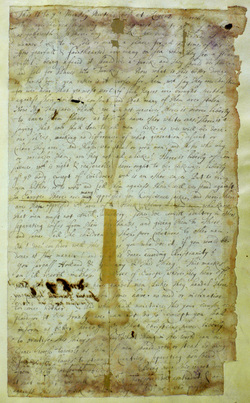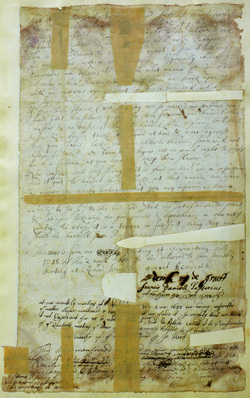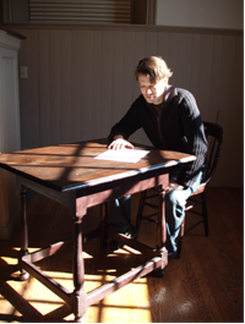1688 Petition Against Slavery

On April 18, 1688 the first written protest against slavery in the new world was drafted in the home of Thönes Kunders of Germantown, who hosted the early Germantown Quaker meetings. The petition was written by practicing Quakers to the local Quaker governing body in Dublin, PA and signed by four men: Derick op den Graeff, Abraham op den Graeff, Francis Daniel Pastorious and Garret Hendericks. Three of the four had longstanding Mennonite associations. The signers were disturbed that many of Philadelphia’s Quakers chose to own slaves. In fact, at the time of the protest, six years after Philadelphia’s founding, about half of British Quakers in the Philadelphia region, including William Penn, held slaves. Although they had come to the new world to escape persecution, they saw no contradiction in owning slaves. The settlers of Germantown, however, came from a country unaccustomed to slavery and the German Quakers in the area refused to participate in the slave trade. Germantown produced the finest linen goods in the region and utilized no slave labor in the process. The monthly meeting recognized the weighty matter of the petition and proceeded with the usual manner of passing serious issues to the quarterly meeting. At the quarterly meeting in Philadelphia the decision was again to send the petition to a higher governing body, the yearly meeting. The Burlington, NJ yearly meeting declined to act upon the issue due to the significant impact it would have on the colony. None of the meetings chose to formally accept the petition and make a judgment in the case. Quakers continued to hold slaves until 1776, when they formally banned slaveholding among their members. 
The 1688 petition utilized various arguments for equal human rights and the unjust nature of slaveholding. First and foremost it appealed to the Golden rule. “Is there any that would be done or handled in this manner?” the petition asked. Liberty should be extended to all people, regardless of their color, and we should act in ways to all people as we would like done to ourselves.
The petition reminds the British Quakers that they fled oppression based on their conscience, but are here causing oppression merely based upon the color of a person’s skin. Engaging in slavery is participating in theft and forced adultery. Buying slaves is buying “stolen” people and families are indiscriminately broken up to form new families. The petition asks the Quakers, who are pacifists, how they would react if the slaves revolt and turned the tables. Would the Quakers then take up sword and fight? Or would they maintain their pacifist ways and allow themselves to be held as slaves? Further, the petition questions how Europeans in non-slave holding countries would feel about moving to a colony where people are treated like cattle. 
Over the years, the table upon which the 1688 Petition was signed was used as a schoolmaster’s table by Christopher Dock, an early Mennonite educator, and for nearly two centuries was used as the communion table for the Germantown Mennonite Congregation. It is now preserved in the historic 1770 Germantown Mennonite Meetinghouse, standing as a testament to faith in action and the social consciousness religious faith can inspire.
Download a transcription of the 1688 Petition Against Slavery. View other early Quaker protests against slavery. |

Support provided in part by
|
Germantown Mennonite Historic Trust - 6133 Germantown Avenue, Philadelphia PA 19144 - (215) 843-0943 - [email protected]


